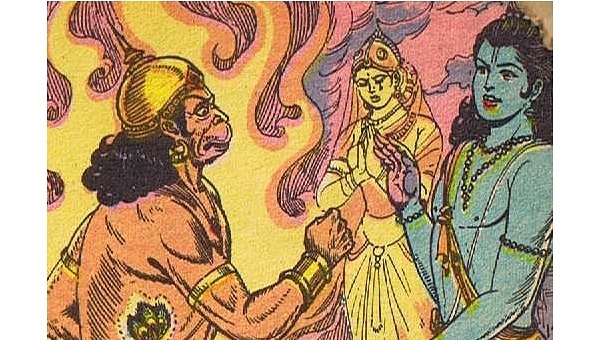
Mythology And Comics: How The Superhero Traditions Of India And The West Compare
While the superheroes of the West derived their characteristics and features from mythological Gods, superheroes in India were Gods themselves.
The centrepieces of today’s popular culture are superheroes and their associated franchises, mainly produced by comic book giants Marvel and DC Comics. Noble by nature, righteous by intent and strong in physicality, these heroes deal with narratives that are part of society at that point in time. In fact, two of the most well-known superheroes, Superman and Captain America, catapulted to fame during the two World Wars, when patriotism and national pride was most needed.
In a recent article, aptly titled ‘From Gods to superheroes: An analysis of Indian comics through a mythological lens’, parallels are drawn between the Western and Indian superheroes, emerging from their respective mythological and religious roots. Religion or notions of divinity have shaped almost all superheroes. Western superheroes find roots in Abrahamic religions as well as Greek, Latin and Biblical literature. In India, the superheroes derive their roots from Indian mythology and epics – Ramayana and Mahabharata. India has a rich legacy of stories of kings who find, through their journey, a higher purpose.
The article goes on to describe the journey of the hero in Indian mythology. Campbell (2001) elucidates mythology as having four aspects:
(a) Mystical – when one realises the vastness of the universe and is in awe of it
(b) Cosmological – attempting to comprehend the mysteries of the universe
(c) Sociological – organising the structure of the society
(d) Pedagogical – when one is guided towards spiritual enrichment
Hindu mythology aligns itself along these aspects as, contrary to the Greek and Abrahamic mythos, Hinduism believes that the universe always existed, and will continue to exist.
Further, Campbell classifies the hero’s story as having three stages:
(a) Departure – where the hero, when drawn into an adventure, refuses to give up his interest, but is pulled in with the aid of a divine or supernatural force, and begins his journey
(b) Initiation – where the hero’s strength and courage are put to test, from which he emerges victoriously. He also meets two female figures, one in the form of a goddess or a maternal figure, who enforces a positive message in him, and two in the form of a temptress, who attempts to sway him from his goal
(c) Return – where the hero is morally conflicted about returning home, but eventually does, with or without the aid of a patron. He returns with a selfless ego and to serve his people. Both Indian epics and the Western superhero narratives broadly fit into these structures.
The adaptability of the stages is evidence for Jung’s claim of a collective unconscious. The common archetype of a hero seems to be deeply embedded within all of us. This archetype is generalised by McLain for the American superhero – extraordinary powers, enemies, a strong moral code, a secret identity, a costume and an origin story.
The similarities between Western and Indian superheroes go beyond their source of origin. The superpowers they possess can be called super-normal – enhancements of the common abilities of human beings, and thus limited to and by the imagination of the human mind. Shape-shifting, flying, healing are commonly found tropes in both cultures.
However, there are key differences as well. In the Indian superhero narrative, the large array of Gods plays different roles, akin to Marvel’s Avengers and DC’s Justice League. Further, the very nature of the two societies being different, the collectivist approach towards problem-solving is reflected in the Indian stories, whereas the individualistic approach is reflected in the Western stories.
The medium of dissemination of the stories vastly differs in the two cultures. In India, the narratives are produced as television shows, both live-action and animated. In the 1980s and 1990s, Mahabharata and Ramayana were successful TV shows. In today’s age, cartoon shows targeted towards younger audiences, like Chhota Bheem and My Friend Ganesha are produced. In the case of the West, multi-million dollar franchises that spin into movies, TV shows and webisodes are produced and consumed. The shift in the mediums can be attributed to a cause of decline in the sale of physical comics in both cultures.
While the superheroes of the West derived their characteristics and features from the mythological Gods, superheroes in India were Gods themselves. Indian comics began with the stories of the epics in Amar Chitra Katha with classic superheroes being Rama and Arjuna; modern Indian superheroes such as Krrish are inspired from Gods (Krishna). With the interdependence of mythology and comics, though striking in India, the future of the Indian superhero remains to be seen.